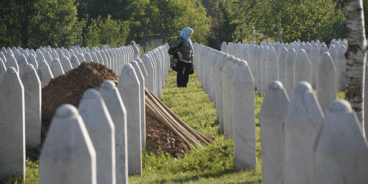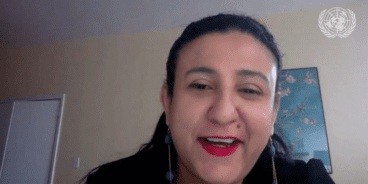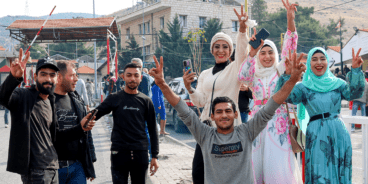
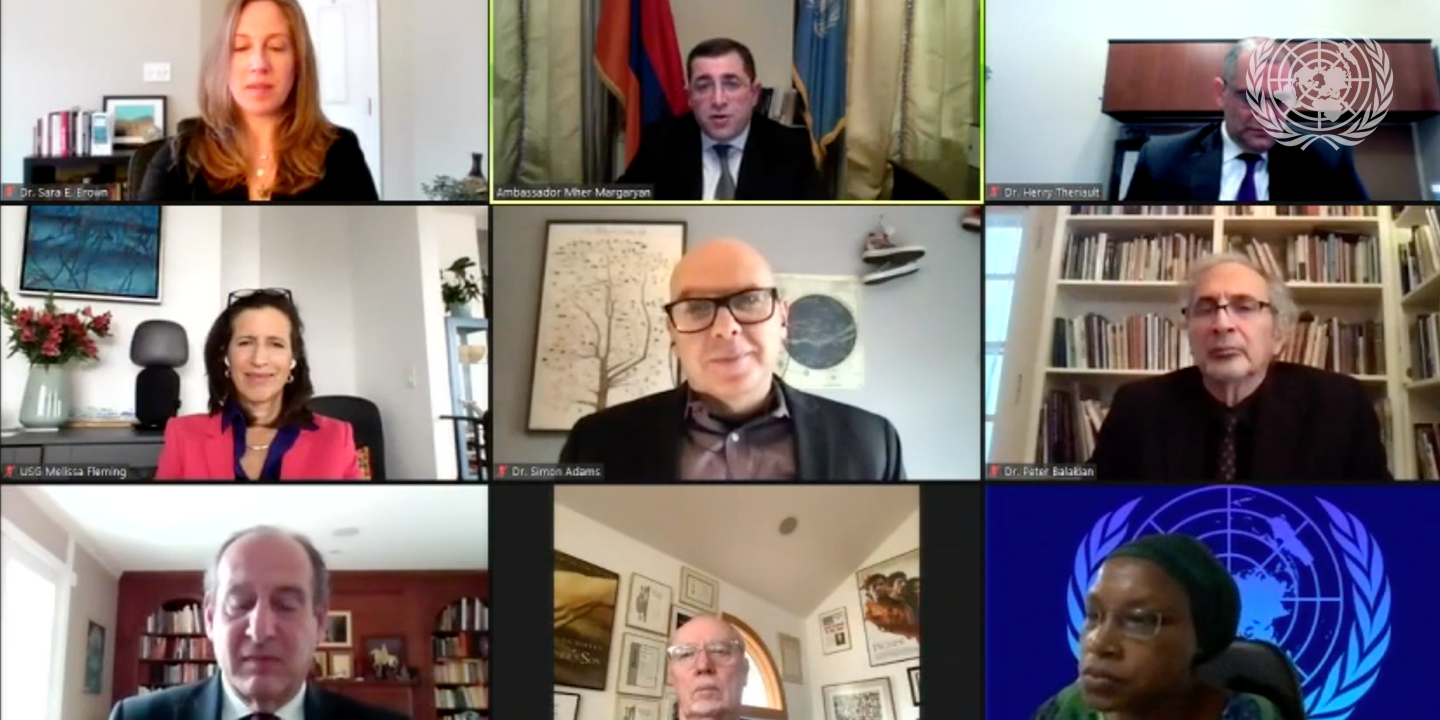
Mass Media and Genocide Prevention: The Promise and Peril of the Digital Age
Remarks delivered by Dr. Simon Adams, Executive Director of the Global Centre for the Responsibility to Protect, on 9 December 2020 at a virtual event marking the International Day of Commemoration and Dignity of the Victims of the Crime of Genocide and of the Prevention of this Crime, hosted by the Permanent Mission of Armenia to the UN
Thank you, Mr. Moderator, and thank you to the Permanent Mission of Armenia for organizing today’s event. This annual day is an opportunity for us to come together as an international community and honor victims of genocide: a crime that diminishes us all and challenges our very sense of what makes us human.
We should always keep in mind that from the genocide inflicted on the Herero and Nama people of Namibia in 1904, at the very start of the twentieth century, to ongoing attempts to destroy entire peoples today, genocide is a crime that must be organized and incited. And that means that it can also be prevented and punished.
Today we renew our commitment to the prevention of genocide. But we must also reinvigorate our understanding of ongoing risks to vulnerable populations around the world and assess our collective capacity to prevent aspiring genocide perpetrators from harvesting fear and targeting the vulnerable.
The 15th anniversary of the adoption of the principle of the Responsibility to Protect was commemorated earlier this year, as was the 105th anniversary of the Armenian genocide. The topic of today’s meeting is very timely. As UN Under-Secretary-General Fleming noted, the expansion and influence of mass media in the digital age is both a blessing and a curse.
In particular, we have all witnessed the potential negative impact social media can have on our daily lives, including on the perception of truth, politics and our common humanity. But the expansion of digital communications and social media has also allowed us to connect and communicate across borders more easily than at any other time in human history. And so it is this duality, of threat and promise, that should remain central to understanding of the role of mass media today.
In this context, let me say that atrocity crimes do not occur in a social vacuum, nor are they isolated or random incidents. Genocide and other atrocity crimes are preceded by a range of early warning signs. And one of the most important warning signs is the proliferation of hate speech and incitement. Hate speech is speech that marginalizes and targets people on the basis of their religion, ethnicity, gender, sexual orientation or race. In other words, it is language that demonizes people not for anything that they have done, but for who they are.
The propagation of hate speech has taken many forms throughout history as media platforms have evolved. The Nazis used virulently anti-Semitic newspapers like Der Stürmer to help incite the German people into active persecution of Jews. Five decades later, during the 1994 genocide in Rwanda, the RTLM radio station played a key role promoting hate speech regarding the Tutsi, inciting the genocide, and even directing the killers with the names of potential victims who had not yet been murdered.
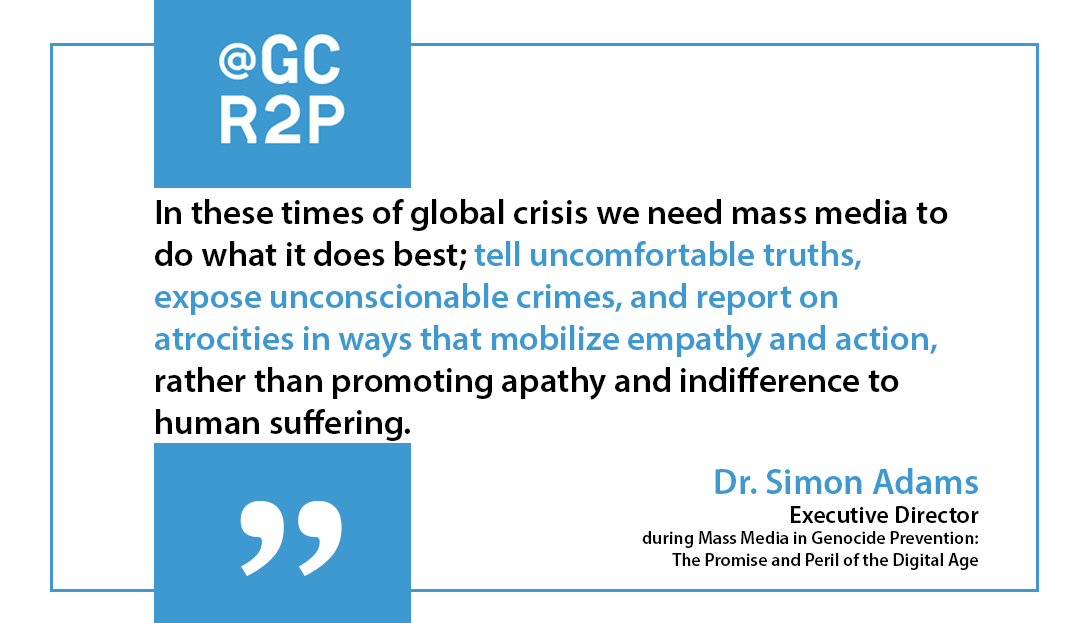
More recently, from ISIS to Myanmar’s generals, social media has become the tool of choice that has been weaponized to target “the other,” and incite atrocities. In this new digital era, Facebook, YouTube, Twitter and other platforms are not just places for information sharing, discussions about the Great British Bake Off, and social networking, they are also places where vilification, targeting and incitement take place.
A very disturbing example is Myanmar where in 2017 the military systematically utilized Facebook as a tool in their persecution of the Rohingya minority, something that has been recognized in documentation currently in front of the ICJ in The Hague as part of a historic case alleging that Myanmar breached its obligations under the Genocide Convention. (And once again I want to acknowledge the political courage of The Gambia for initiating the case).
However, just as propaganda and hate speech can be disseminated via mass media, these platforms can also be a crucial element in the prevention of atrocities. Mass media and digital platforms can help cultivate an inclusive public discourse, compel humanitarian responses, and address early warning signs of potential atrocities. We need to harness the potential of social media as a tool for atrocity prevention, instead of allowing it to be manipulated for malignant purposes.
How? Technology and social media companies need to move beyond ad hoc responses to the ways in which their platforms are being misused. All of these companies should employ experts to tackle the problem on their platforms and establish designated staff for monitoring human rights and hate speech.
Governments and multilateral bodies must also increase pressure on Facebook, Twitter, and other platforms to actively stop hate speech from being propagated on networks that operate in their country. The UN Plan of Action and Strategy on Hate Speech provides good recommendations in this regard.
Hate speech has always been about forging identities amongst both the targeted and amongst those who do the targeting. Identities are redefined and weaponized. But this means that they can also be contested and disrupted.
And the upside of the expansion of mass media and digital communications is that it has allowed us to peer behind closed borders and has given us the potential to expose the crimes of perpetrators like never before. Evidence of what is happening in the darkest dungeon, beside the most remote mass grave, or inside any killing zone, is just one click of an iPhone away.
And so, I would like to end by saying that just as not all media is malignant, not all content is equal. There should be no space on any mass media or social media platform for genocide deniers or for those who use it to incite violence or promote the politics of the machete, the concentration camp or the mass grave. But the antidote to hate speech is speech that promotes and protects everyone’s human rights.
And in these times of global crisis – with an unprecedented 80 million people displaced by persecution, conflict and atrocities – we need mass media to do what it does best; tell uncomfortable truths, expose unconscionable crimes, and report on conflict and human rights in ways that mobilize empathy and action, rather than promoting apathy and indifference to human suffering.
Thank you.
Related Content

